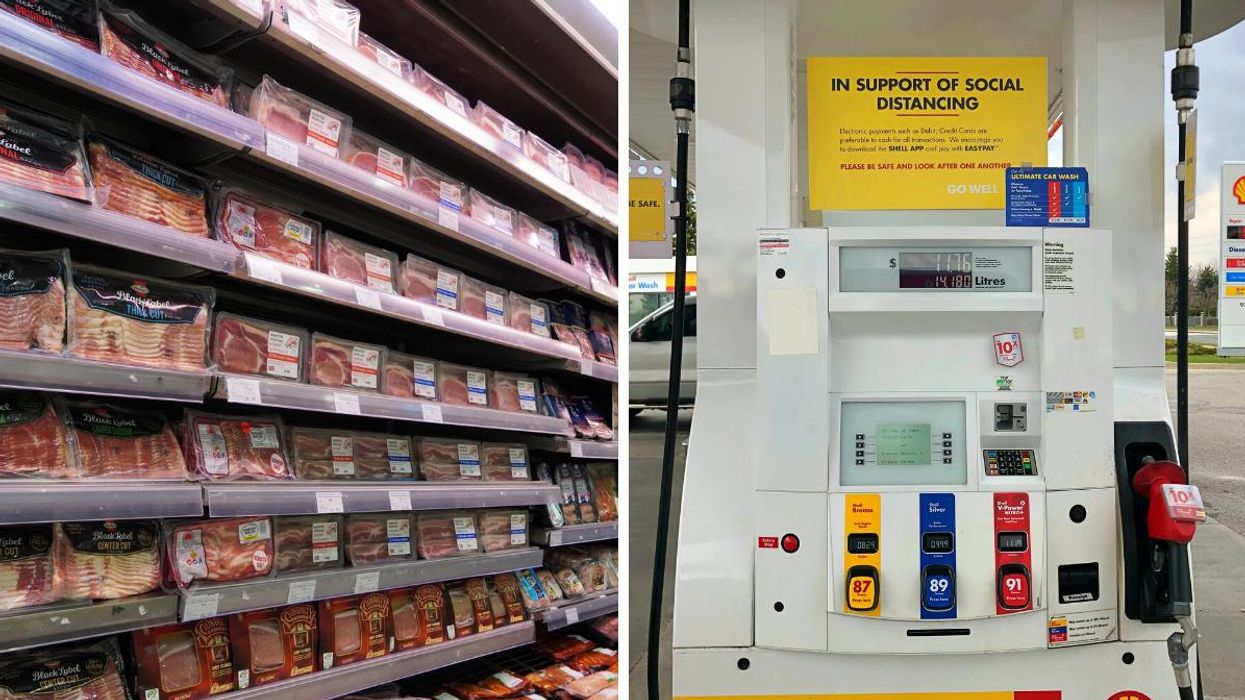Canada's Inflation Rate Hit A 30-Year High In 2021 & Now Everyone's Feeling The Effects
Those gas prices, though. 😬
If you've noticed the cost of just about everything has been hitting your wallet a little harder, you can thank Canada's inflation rate.
According to an annual report from Statistics Canada, released on January 19, the Consumer Price Index "rose 3.4% on an annual average basis in 2021, following an increase of 0.7% in 2020."
This marked the fastest pace since 1991, which was a whopping 30 years ago.
Statistics Canada says the reason the numbers have gone up is due in part to COVID-19 impacting the prices of goods and services, as well as issues with the global supply chain and "pent-up consumer demand as the economy reopened."
The CPI measures eight categories: food, shelter, clothing and footwear, transportation, health and personal care, recreation, alcoholic beverages, tobacco products and recreational cannabis, household operations, furnishings and equipment.
Of those eight groups, prices rose in every category except for in clothing and footwear in comparison with 2020.
On an annual average basis, the Consumer Price Index rose 3.4% in 2021, following an increase of 0.7% in 2020. This marked the fastest pace since 1991 (+5.6%). Learn more here: https://ow.ly/9vOR50HxUQ9\u00a0 . #CPIpic.twitter.com/eCn9kTd4Bw— Statistics Canada (@Statistics Canada) 1642602604
Transportation prices (+7.2%) rose at the fastest pace, with Canadian motorists paying 31.2% more at the pump on an annual average basis in 2021. Gasoline prices rose at the fastest pace since 1981 (+36.1%).
This impacted some regions more than others, too.
Statistics Canada explains, "Nova Scotians paid 39.3% more for gasoline in 2021 than they did in 2020, 8.1 percentage points more than the national average. Although gas prices in British Columbia rose at the slowest pace among the provinces, annual average prices increased 24.2%."
The cost of groceries also might have given Canadians sticker shock in 2021. The prices for eggs (+6.3%), bacon (+12.5%), bread, rolls and buns (+0.6%), and fresh fruit (+2.6%) all went up. Ouch!
As for which regions faced the fastest rates of consumer price growth overall, Atlantic Canada got hit particularly hard, but the Prairies faired a bit better.
"Prince Edward Island (+5.1%) and Nova Scotia (+4.1%) recorded the highest rates of inflation, while price growth in all Atlantic provinces exceeded the national average," the report says.
Canadians living in Quebec (+3.8%) and Ontario (+3.5%) also experienced price growth above the national average.
"Conversely, price growth in the western provinces lagged behind the national average, with Saskatchewan (+2.6%) recording the lowest inflation rate."
Hopefully things take a shift for 2022!
This article's cover image was used for illustrative purposes only.
- Canada's Grocery Costs Keep On Climbing & Here's What You're ... ›
- Meat Now Costs Way More In Canada & The Prices May Stop You ... ›
- Canada's Inflation Rate Hit An 18-Year High In September & Here's ... ›
- A New Report Says Canada Is One Of The Most Miserable Countries In The World - Narcity ›
- Almost 60% Of Canadians Find It 'Difficult' To Afford Groceries According To A New Poll ›
- Food Prices In Canada Went Up In 2021 & These Grocery Items Got Way More Expensive - Narcity ›
- The Price Of Some Groceries Has Gone Way, Way Up & Here's What's Costing More - Narcity ›
- Canada's Inflation Rate Is at A 30-Year High & Here's What That Means For Your Wallet - Narcity ›
- Inflation Has Gone Up Again & It's The Biggest Increase Of The Cost Of Groceries In 40 Years - Narcity ›
- An Ontario Restaurant Took Salads Off Their Menu Because Of How Expensive Lettuce Has Gotten - Narcity ›

